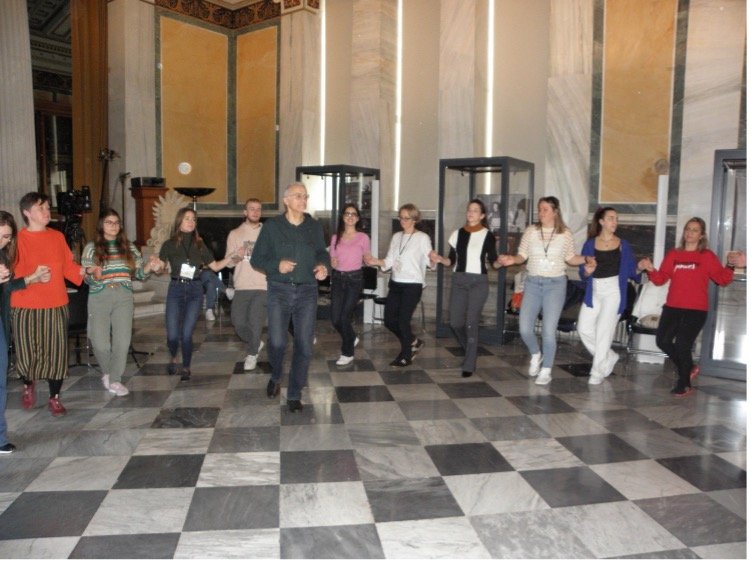Dance–ICH Through the eyes of the Project leader
Opening Speech – How sustainable is Dance as ICH?
Ladies and Gentlemen,
Distinguished Guests,
Dear Colleagues and Friends,
It is my great pleasure to welcome you to this important gathering dedicated to celebrating, exploring, and safeguarding dance as living cultural heritage.
We started out 5 years ago with planning, initiating and mapping the field we needed and urged to explore.
Then covid came, which in our case gave us the much needed time. Time to write a fantastic well designed and planed application. We had online meetings, several, to get to know eachother, find the right angle and arguments for each institution to join and benefit the project, to find the right words to use - which we have continued to do during the whole period.
We met four times during year 2- travelled and shared good practices,
We have executed and implemented 6 cases
We have made a research book
We have created a toolbox
And planned for an international conference.
Over the course of this project, we have journeyed across Europe—from Norway, Belgium, to Slovenia, Romania, Hungary, Greece, —engaging with a rich diversity of dance traditions, communities, and practices. This initiative has not only brought together cultural heritage institutions, researchers, and artists, but most importantly, it has fostered deep collaborations with communities, inviting them to become co-creators in the safeguarding process.
At the heart of our work is a paradigm shift: moving from viewing intangible cultural heritage (ICH) as something to be demonstrated, to something to be lived, shared, and co-created. We have explored how museums and cultural institutions can serve as active facilitators—not just presenters—of living traditions. By transforming these institutions into meeting places, they become spaces of participation, inclusion, and empowerment, where traditional knowledge is transmitted through embodied learning, involvement, and dialogue.
Through these local and regional experiments that will be presented here this week, we’ve seen how ownership of tradition grows through active participation. This ownership is essential to the sustainable transmission of ICH, especially in contemporary societies facing cultural, social, and financial challenges.
Rather than building from scratch, we have demonstrated how existing networks, venues, and relationships can be activated and reimagined to sustain dance as a vital and vibrant part of community life. We’ve observed a common thread: when institutions listen, co-create, and empower, cultural practices thrive.
The project has also advanced our understanding of sustainable safeguarding models for ICH. We have tested and documented participatory approaches that are both locally adaptable and globally relevant. Our toolbox—including a handbook, guidelines, exhibitions, and a transnational network—aim to equip professionals, policymakers, and communities with practical tools for future initiatives.
This work directly supports several Sustainable Development Goals:
SDG 4: Quality education through heritage learning,
SDG 10: Social and political inclusion,
SDG 11: Stronger, more resilient communities through culture,
SDG 17: Effective partnerships across sectors and borders.
By placing dance participation at the center—not as a spectacle, but as a shared practice—we not only ensure its transmission, but also build bridges between generations, disciplines, and social groups. The methodologies developed emphasize bottom-up engagement, co-ownership, and cultural brokering, in line with the principles of the 2003 UNESCO Convention.
As we open this final conference, we invite you to reflect on these models, challenge them, expand them—and take them further. We are not only discussing dance. We are discussing how communities and institutions can collaborate to build a sustainable future for our shared, living cultural heritage. The new important buzz words are cultural and societal recilience and cultural preparedness. Thank you for 4 beautiful and humble years, let us continue this important conversation together.
Tone Erlien Myrvold - project leader











